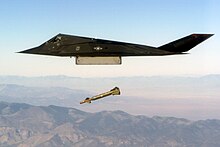

In engineering, hardware architecture refers to the identification of a system's physical components and their interrelationships. This description, often called a hardware design model, allows hardware designers to understand how their components fit into a system architecture and provides to software component designers important information needed for software development and integration. Clear definition of a hardware architecture allows the various traditional engineering disciplines (e.g., electrical and mechanical engineering) to work more effectively together to develop and manufacture new machines, devices and components.[1]
Hardware is also an expression used within the computer engineering industry to explicitly distinguish the (electronic computer) hardware from the software that runs on it. But hardware, within the automation and software engineering disciplines, need not simply be a computer of some sort. A modern automobile runs vastly more software than the Apollo spacecraft. Also, modern aircraft cannot function without running tens of millions of computer instructions embedded and distributed throughout the aircraft and resident in both standard computer hardware and in specialized hardware components such as IC wired logic gates, analog and hybrid devices, and other digital components. The need to effectively model how separate physical components combine to form complex systems is important over a wide range of applications, including computers, personal digital assistants (PDAs), cell phones, surgical instrumentation, satellites, and submarines.
Hardware architecture is the representation of an engineered (or to be engineered) electronic or electromechanical hardware system, and the process and discipline for effectively implementing the design(s) for such a system. It is generally part of a larger integrated system encompassing information, software, and device prototyping.[2]
It is a representation because it is used to convey information about the related elements comprising a hardware system, the relationships among those elements, and the rules governing those relationships.

It is a process because a sequence of steps is prescribed to produce or change the architecture, and/or a design from that architecture, of a hardware system within a set of constraints.
It is a discipline because a body of knowledge is used to inform practitioners as to the most effective way to design the system within a set of constraints.
A hardware architecture is primarily concerned with the internal electrical (and, more rarely, the mechanical) interfaces among the system's components or subsystems, and the interface between the system and its external environment, especially the devices operated by or the electronic displays viewed by a user. (This latter, special interface, is known as the computer human interface, AKA human computer interface, or HCI; formerly called the man-machine interface.)[3] Integrated circuit (IC) designers are driving current technologies into innovative approaches for new products. Hence, multiple layers of active devices are being proposed as single chip, opening up opportunities for disruptive microelectronic, optoelectronic, and new microelectromechanical hardware implementation.[4][5]
- ^ Rai, L.; Kang, S.J. (2008). "Rule-based modular software and hardware architecture for multi-shaped robots using real-time dynamic behavior identification and selection". Knowledge-Based Systems. 21 (4): 273–283. doi:10.1016/j.knosys.2007.05.008.
- ^ Frampton, K.D., Martin, S.E. & Minor, K. (2003). "The scaling of acoustic streaming for application in micro-fluidic devices". Applied Acoustics. 64 (7): 681–692. doi:10.1016/S0003-682X(03)00005-7.
{{cite journal}}: CS1 maint: multiple names: authors list (link) - ^ Brunelli, C., Garzia, F. & Nurmi, J. (2008). "A coarse-grain reconfigurable architecture for multimedia applications featuring subword computation capabilities". Journal of Real-Time Image Processing. 3 (1–2): 21–32. doi:10.1007/s11554-008-0071-3. S2CID 25962199.
{{cite journal}}: CS1 maint: multiple names: authors list (link) - ^ Cale, T.S., Lu, J.-Q. & Gutmann, R.J. (2008). "Three-dimensional integration in microelectronics: Motivation, processing, and thermomechanical modeling". Chemical Engineering Communications. 195 (8): 847–888. doi:10.1080/00986440801930302. S2CID 95022083.
{{cite journal}}: CS1 maint: multiple names: authors list (link) - ^ Cavalcanti, A., Shirinzadeh, B., Zhang, M. & Kretly, L.C. (2008). "Nanorobot Hardware Architecture for Medical Defense". Sensors. 8 (5): 2932–2958. Bibcode:2008Senso...8.2932C. doi:10.3390/s8052932. PMC 3675524. PMID 27879858.
{{cite journal}}: CS1 maint: multiple names: authors list (link)
© MMXXIII Rich X Search. We shall prevail. All rights reserved. Rich X Search
